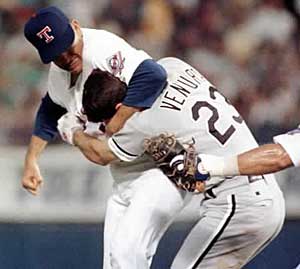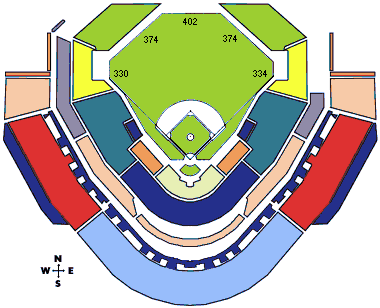
When the Blazers won the rights to the first pick in the 2007 NBA Draft, they found themselves with a problem that any team would love to have. Who should Portland take with the top pick?
The two standout choices were both college freshmen last season: Ohio State's Greg Oden & Texas standout Kevin Durant. While the Blazers seem to be leaning towards Oden, a 7-foot man-child, a strong case can also be made for choosing Durant, who has smoothness and skills oozing out of him, a la Tracy McGrady.
In a current NBA fan poll, the question is asked: "Who will have the better NBA career?"
Oden leads Durant by a slim 53% to 47% margin.
Looking at the Blazers, there are two pressing needs. One is for a dominant big man (Oden). The other is for a sharp-shooting two-guard or small forward (Durant). Let's look at the two players and how they might fit into the Blazers' plans...
Greg Oden is the best big man to come out of college since Tim Duncan. You can't teach size, and Oden will immediately improve the Blazers defensively, and has good offensive skills as well. Despite missing some games last year with a hand injury, he averaged double-doubles shooting only with his off-hand! Oden has a fantastic work ethic, too. In the NCAA championship game against the Gators (best front line in college hoops) , he scored 25 points and ripped down 12 rebounds.
Dominant centers have been the cornerstones of championship teams in recent years. Look at the number of rings that Duncan, Shaq and Hakeem Olajuwon have won. We might not see another center of Greg Oden's caliber for another ten to twenty years.
Kevin Durant is a 6-foot-nine wunderkid who can do pretty much everything on the basketball floor. He's a dangerous outside shooter, but has the drive-and-slash game to match. There is probably no one in the NBA who could effectively match up defensively against Durant. He also may not be done growing, which is a scary thought. Durant will probably never be the defensive stopper that Oden will, but he promises to be much more dangerous on the offensive end.
In 1984, Portland drafted 7-footer Sam Bowie with the #2 pick (Olajuwon went #1). The next pick was some guy named Jordan who went to Chicago. Years after Bowie had left Portland as a bust, Michael and the Bulls were trouncing the Blazers in the NBA championship on their way to six titles. Yes, Olajuwon worked out well for Houston, but the point is that Bowie did not. You never know when big-men's knees are going to fail to stand up to the rigors of the NBA game. Oden will be a great shot-blocker, but the Blazers already have a nice, young center in LaMarcus Aldridge. Durant supplies what the Blazers have been missing ever since Clyde Drexler retired - a perimeter shooter who can always get his shot off, or drive by you in a nanosecond.
As a Blazer fan, I'm hoping they go against all reason, and choose Kevin Durant with the top pick in this year's draft.
Your thoughts?








